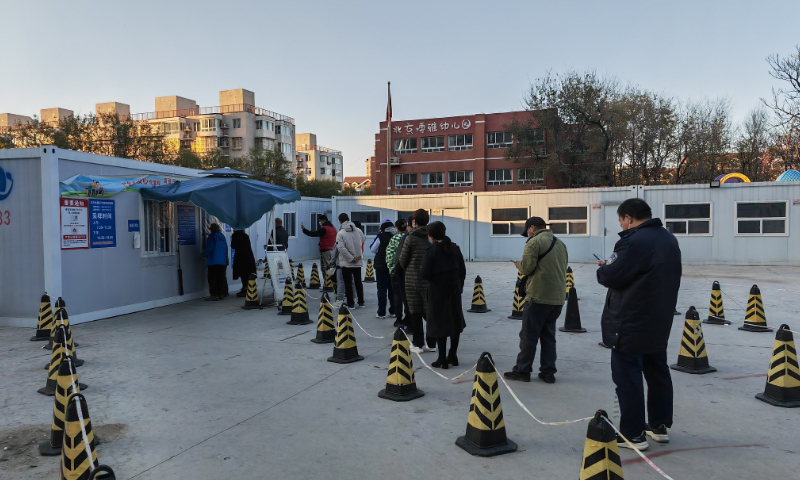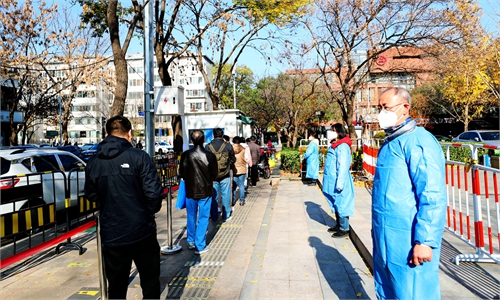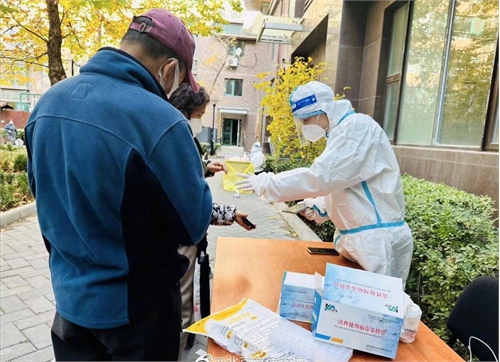Beijing encourages flexible working mode as epidemic situation 'remains grim and complex'

Residents in Beijing line to take nucleic acid tests on November 15, 2022. Photo: VCG
As the latest COVID flare-up in Beijing worsens, officials from the hardest-hit Chaoyang district suggested flexible working arrangements such as teleconferencing and meeting via video link for local workers to keep social distance.
Beijing reported 218 new local infections including 23 discovered in community screenings, the Beijing Center for Disease Prevention and Control announced at a press briefing on Thursday.
The cluster infections are intertwined with sporadic cases in Beijing currently with cases identified at community level involving multiple districts, while imported cases from other regions and from overseas continue to increase, posing a grim and complex epidemic prevention situation to the city, Xu Hejian, spokesperson for the Beijing Municipal People's Government, said at the briefing.
Chaoyang registered 78 local confirmed patients and 152 asymptomatic infections on Wednesday, including 38 cases discovered in communities. The district reported 95 new infections as of 3 pm on Thursday, including 10 identified at community level.
The number of new infections discovered at community level has been increasing and the areas involved has been expanding over the past few days, showing a sporadic trend, Yang Beibei, deputy head of the Chaoyang district said at the press briefing, calling for the local residents to decrease unnecessary outgoing and gathering.
Besides, the authority encouraged teleconferencing and meeting via video link by companies to keep social distance between workers.
The authority stressed the management on personnel, requiring nucleic acid testing on people at risk.
The National Bureau of Disease Control and Prevention announced at a press conference on Thursday that when domestic cluster infection breaks out in the future, only those in close contact with the infections will be quarantined. Previously, contacts of close contacts of infections, or secondary close contacts, were also quarantined.
The adjustment on the management on the contacts of infections is a more scientific and accurate prevention and control measure based on the degree of risks, a move to more effectively use the prevention and control resources such as epidemiological investigations and quarantine, said Shen Hongbing, deputy director of the bureau.


